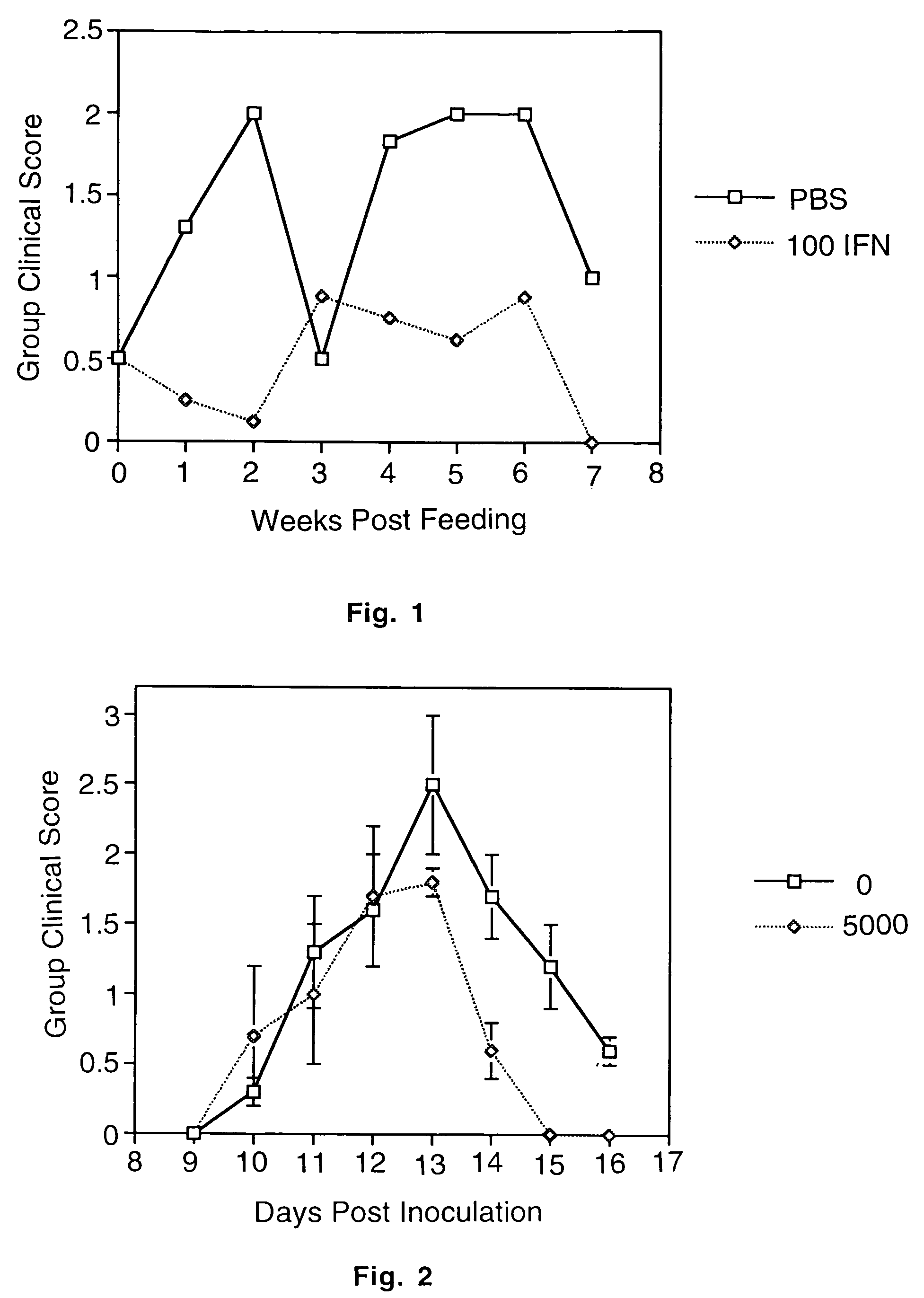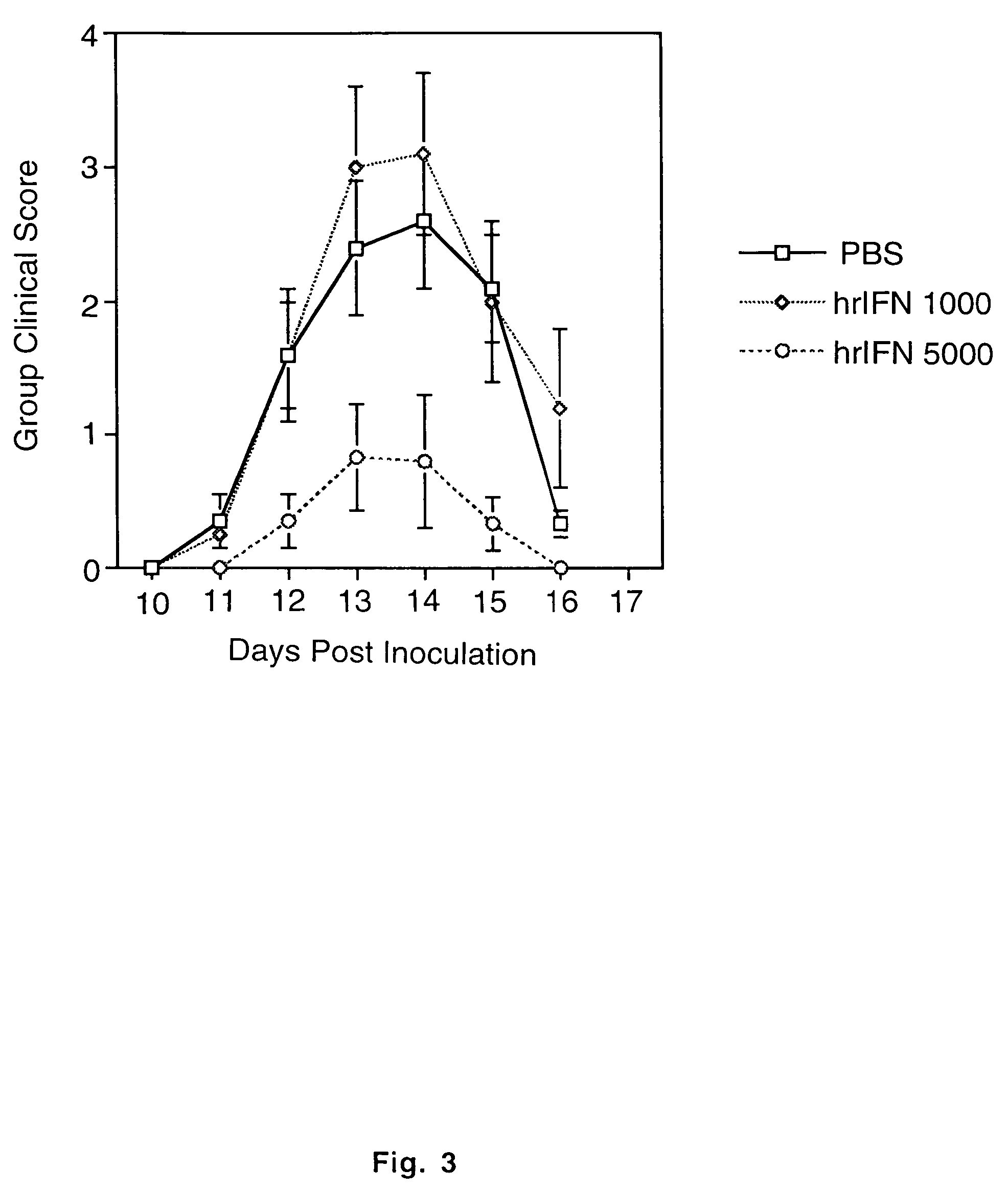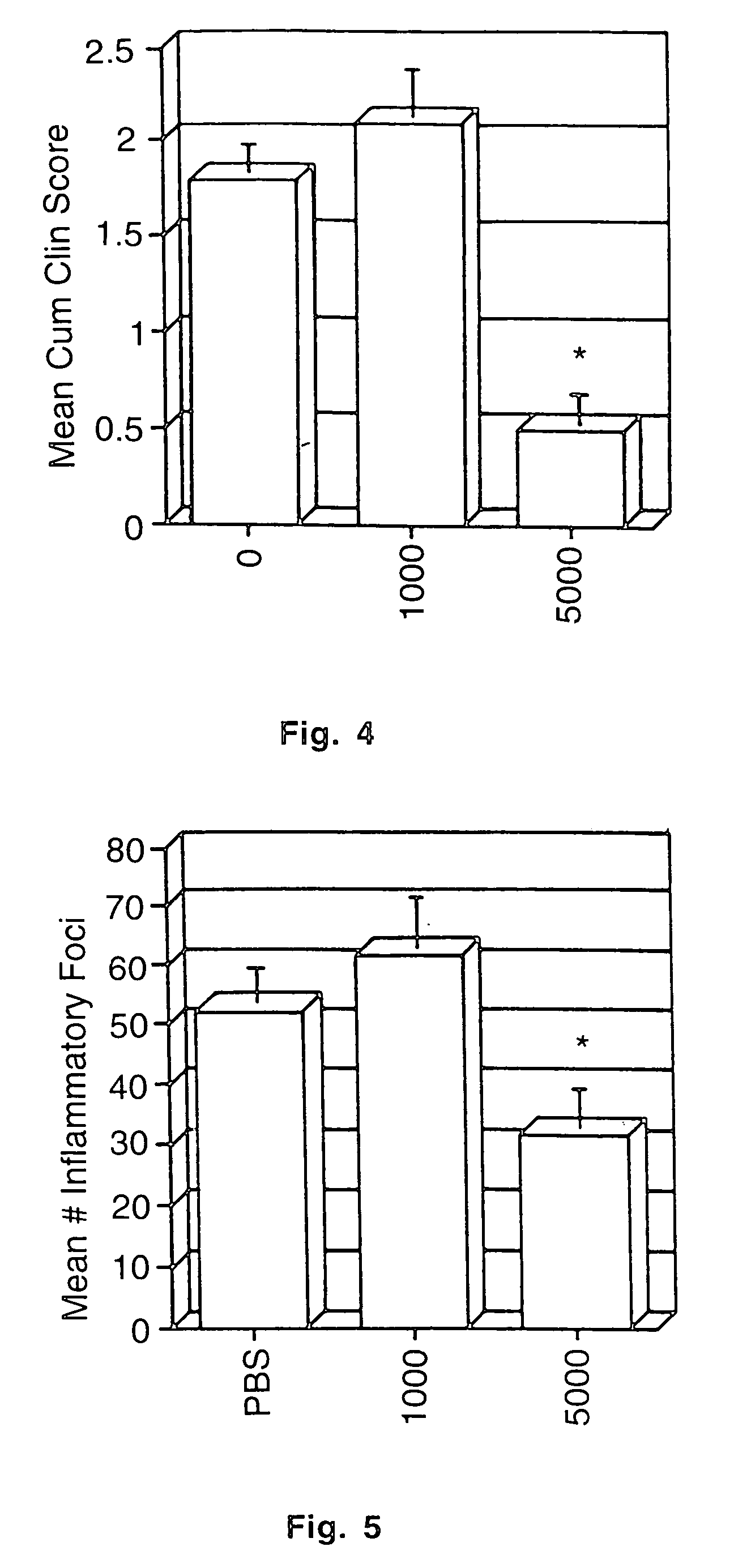Methods of treating rheumatoid arthritis using orally administered type one interferons
a technology of type one interferon and rheumatoid arthritis, which is applied in the fields of immunology and protein chemistry, can solve the problems of lack of effective means in the early stages, and achieve the effect of suppressing clinical expression of relapse and reducing inflammation
- Summary
- Abstract
- Description
- Claims
- Application Information
AI Technical Summary
Benefits of technology
Problems solved by technology
Method used
Image
Examples
example 1
Induction of Experimental Autoimmune Encephalomyelitis.
[0057]A chronic relapsing form of EAE was induced in 7-10 week old female SJL / J mice using the method of Brown and McFarlin, Lab. Invest. (1981) 45:278-284 as modified by Miller et al., J. Immunol. (1987) 138:3776-3784. Briefly, each mouse received a subcutaneous injection over the shaved right flank of 0.3 ml of an emulsion containing 1 mg of syngeneic mouse spinal cord homogenate [MSCH] in 0.15 ml of phosphate buffered saline and 0.03 mg of Mycobacterium tuberculosus hominis H37Ra [MT] [Difco Labs, Detroit, Mich.] in 0.15 ml of incomplete Freund's adjuvant [IFA]. Seven days later, the mice received a similar injection in the left flank. Initial clinical signs of disease were seen between days 13 and 25 postimmunization. Initial clinical signs of disease were seen between days 13 and 25 postimmunization. Clinical severity of the relapse attack was graded as follows by a blinded observer: 0=no disease; 1=minimal or mild hind lim...
example 2
Cytokine Feeding
[0058]Following initial attack, animals were fed varying doses [1-100 units] of murine natural IFN-α / β [Cytimmune mouse IFN-α+β, 4.0×105 IRU / ml, Lee Biomolecular Research, Inc., San Diego, Calif.], or mock murine IFN-α / β [Cytimmune<2 IRU / ml, Lee Biomolecular Research, Inc., San Diego, Calif. {generated identically to IFN-α / β except cultures are mock induced}] using a 2.5 cm syringe fitted with a 20 gauge ball point needle [Thomas Scientific, Swedesboro, N.J.] three times per week [Monday, Wednesday, Friday] for 6-8 weeks. Mock IFN were used as control since heat denatured IFN may retain some immunological activity.
example 3
Preparation of Guinea Pig Myelin Basic Protein [GP-MBP]
[0059]Twenty grams of guinea pig spinal cord were added to 4.7 ml-20° C. methanol and homogenized with a tissue homogenizer. 9.4 ml-20° C. chloroform was added, homogenized an additional 2 minutes and stirred for 60 minutes at room temperature; then at 4° C. for an additional 60 minutes. The material was filtered through 2 thicknesses of sterile gauze through a chilled Buchner flask and a # 1 Whatman filter paper. The tissue cake was rinsed with 20 ml-20° C. acetone and was resuspended in 40 ml of cold ddH2O; then stirred 30 minutes at 4° C., filtered a second time and resuspended in 10 ml of cold ddH2O. Suspension was sonicated to facilitate resuspension of pellet in ddH2O.
[0060]Tissue / H2O slurry was adjusted to pH=3 with 1 N HCl and stirred overnight at 4° C. After an overnight spin, pH was readjusted to 3 and spun at 10,000×g for 15 minutes at 4° C. Supernatant was filtered through #1 Whatman paper and liquid filtrate retaine...
PUM
| Property | Measurement | Unit |
|---|---|---|
| Solubility (mass) | aaaaa | aaaaa |
Abstract
Description
Claims
Application Information
 Login to View More
Login to View More - R&D Engineer
- R&D Manager
- IP Professional
- Industry Leading Data Capabilities
- Powerful AI technology
- Patent DNA Extraction
Browse by: Latest US Patents, China's latest patents, Technical Efficacy Thesaurus, Application Domain, Technology Topic, Popular Technical Reports.
© 2024 PatSnap. All rights reserved.Legal|Privacy policy|Modern Slavery Act Transparency Statement|Sitemap|About US| Contact US: help@patsnap.com










